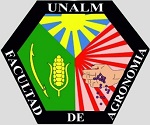Life Cycle of the Diamondback Moth Plutella xylostella L. (Lepidoptera: Plutellidae), in Broccoli and Cauliflower under Laboratory Conditions
DOI:
https://doi.org/10.21704/pja.v3i1.1132Keywords:
Plutella xylostella, DBM, life cycle, Brassicaceae, broccoli, cauliflower.Abstract
Esta investigación tuvo como objetivo determinar el ciclo biológico de Plutella xylostella (DBM), criada en brócoli var. Calabrese y coliflor var. Bola de nieve en condiciones de laboratorio con un promedio de 76.1 ° F y 65% RH. El apareamiento de las polillas se realizó en recipientes plásticos de un litro y las posturas se incubaron dentro de vasos de polipropileno de 200 ml, ambos cubiertos con redes. Para proporcionar suministro adecuado a las larvas, las plantas se cultivaron a cubierto para evitar la infestación de plagas. Se utilizaron hojas frescas para alimentar a las larvas hasta la pupación. Los resultados se analizaron con la prueba estadística no paramétrica de Kruskal-Wallis.Se obtuvieron los siguientes parámetros biológicos, criados con hojas de brócoli y coliflor respectivamente: período de incubación 3 días; período larvario 9,76 y 9,69 días; período de pupa 5,1 y 5,3 días; ciclo biológico 19,5 y 19. 9 días y 175 y 187 huevos según la capacidad de oviposición de las hembras apareadas. Estos resultados no muestran diferencias estadísticas significativas del ciclo biológico de la polilla entre las dos plantas hospedantes.
Downloads
References
Cohen, J. H., Kristal, A. R., & Stanford, J. L. (2000). Fruit and vegetable intakes and prostate cancer risk. Journal of the National Cancer Institute, 92(1), 61–68. https://doi.org/10.1093/jnci/92.1.61
Ebrahimi, N., Talebi, A., Fathipour, Y., & Zamani, A. (2008). Host Plants Effect on Preference , Development and Reproduction of Plutella xylostella (L.) (Lepidoptera: Plutellidae) Under Laboratory Conditions. Advances in Environmental Biology, 2(3), 108–114. http://scinet.dost.gov.ph/union/Downloads/108-114_224638.pdf
Fernández, S., & Alvarez, C. (1988). Biología de Plutella xylostella L. (Lepidoptera: Yponomeutidae) polilla del repollo (Brassica oleraceae L.) en condiciones de laboratorio. Agronomía Tropical, 38: 17–28.
García-Morató, M. (2000). Plagas y enfermedades en el cultivo de coliflor. Descripción y control. Vida Rural: 34-37. https://www.mapa.gob.es/ministerio/pags/biblioteca/revistas/pdf_vrural/Vrural_2000_107_34_37.pdf
Golizadeh, A., Kamali, K., Fathipour, Y., & Abbasipour, H. (2009). Life Table of the Diamondback Moth, Plutella xylostella (L.) (Lepidoptera: Plutellidae) on Five Cultivated Brassicaceous Host Plants. Journal of Agricultural Science and Technology, 11, 115–124. http://jast.modares.ac.ir/article-23-9848-en.pdf
Hasanshahi, G., Jahan, F., Abbasipour, H., Salehi-tabar, M., Askarianzadeh, A., Karimi, J., & Rahimi, AH. (2014). Biology and demography of the diamondback moth, Plutella xylostella (Lepidoptera: Plutellidae) on five cauliflower cultivars under laboratory conditions. Acta Entomologica Sinica, 57(1), 61–66.
Keck, A. S., & Finley, J. W. (2004). Cruciferous Vegetables: Cancer Protective Mechanisms of Glucosinolate Hydrolysis Products and Selenium. Integrative Cancer Therapies, 3(1), 5–12. https://doi.org/10.1177/1534735403261831
Lampe, J., & Peterson, S. (2002). Brassica, Biotransformation and Cancer Risk: Genetic Polymorphisms Alter the Preventive Effects of Cruciferous Vegetables. The Journal of. Nutrition, 132(10), 2991–2994. https://doi.org/10.1093/jn/131.10.2991
Lingappa, S., Basavanagoud, K., Kulkarni, K., Patil, R., & Kambrekar, D. (2004). Threat to Vegetable Production by Diamondback Moth and its Management Strategies. Fruit and Vegetables Diseases. USA, Kluwer Academic Publisher, 357-396.
Niu, Y. Q., Li, X. W., Li, P., & Liu, T. X. (2013). Effects of different cruciferous crops on the fitness of Plutella xylostella (Lepidoptera: Plutellidae). Crop Protection, 54, 100–105. https://doi.org/10.1016/j.cropro.2013.08.004
Saeed, R., Sayyed, A. H., Shad, S. A., & Zaka, S. M. (2010). Effect of different host plants on the fitness of diamond-back moth, Plutella xylostella (Lepidoptera: Plutellidae). Crop Protection, 29(2), 178–182. https://doi.org/10.1016/j.cropro.2009.09.012
Sánchez, G., & Vergara, C. (2014). Plagas de Hortalizas (Cuarta edición). Lima - Perú: Departamento de Entomología. Universidad Nacional Agraria La Molina, 172 p.
Sarnthoy, O., Keinmeesuke, P., Sinchaisri, N., & Nakasuji, F. (1989). Development and Reproductive Rate of the Diamondback Moth Plutella xylostella from Thailand. Applied Entomology and Zoology, 24(2), 202–208. https://doi.org/10.1303/aez.24.202
Syed, T. S., & Abro, G. H. (2003). Effect of Brassica vegetable Hosts on Biology and Life Table Parameters of Plutella xylostella under Laboratory Conditions. Pakistan Journal of Biological Sciences, 6(22), 1891–1896. https://doi.org/10.3923/pjbs.2003.1891.1896










